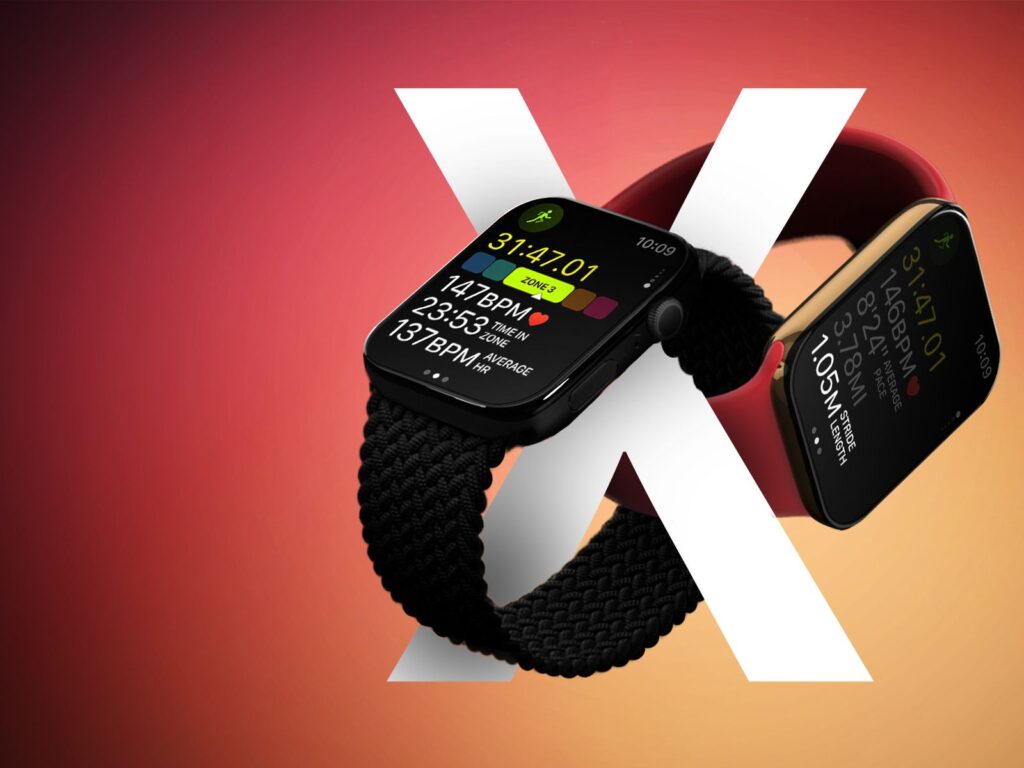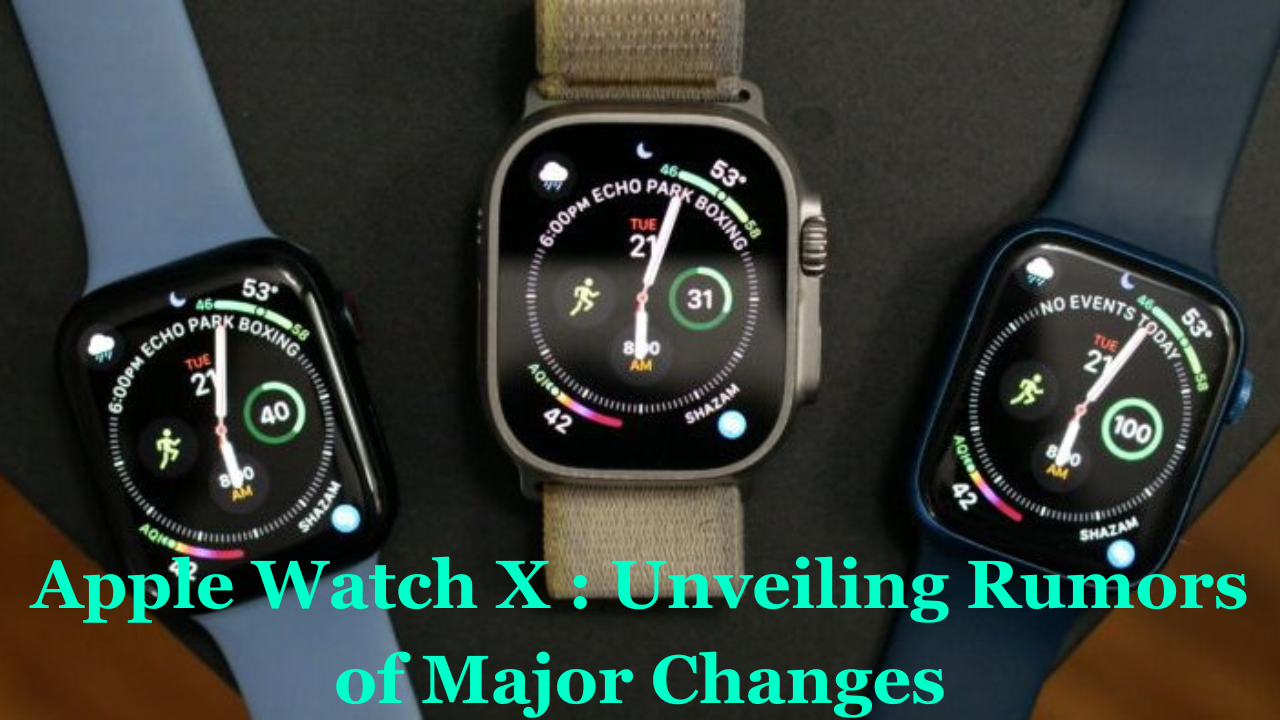What can be anticipated from Apple’s next wearable device?
Apple may have made more headlines with the release of the Vision Pro this year, but it’s still important to keep a look out for the much-discussed Apple Watch X.
Ten years have passed since Apple initially announced its first smartwatch this year, and Bloomberg reports that a significant redesign of the Watch is planned to recognize the milestone. The name brings to mind the 2017 iPhone X, which marked a significant departure from Apple’s prior design and was released in conjunction with the device’s tenth anniversary.
There are rumors that the Apple Watch X (unofficial name) will have a new magnetic band attachment mechanism and a slimmer design. According to multiple Bloomberg stories, additional health functions like blood pressure monitoring may potentially be included.
At its yearly launch event in the fall, Apple may unveil the Apple Watch X together with the newest iPhone. Even if the first generation Apple Watch debuted in 2015, after being announced in 2014, the Watch X may possibly launch in 2025.

Apple Watch X: A new medical device.
Apple has been successful in portraying the Apple Watch as a health gadget after making a shift away from fashion. In recent years, Apple has released a number of innovative health tracking devices, including as temperature sensors, blood-oxygen monitors, and software features tailored for runners and cyclists. It’s important to note, though, that due to a patent issue, the blood oxygen capability is no longer accessible in new Series 9 and Ultra 2 watches sold in the US.
More health-tracking capabilities may be added to the Apple Watch next year, which might increase its value as a wellness and fitness tool. An item from Bloomberg in November said that Apple would implement a new function that could indicate when a person’s blood pressure is elevated.There are rumors that it will come with a blood pressure log so that users may record the time of the elevation. However, Bloomberg noted that it will not provide precise diastolic and systolic measurements.
The report also suggests that a new technology that tracks a person’s breathing and sleeping patterns might be added to the Apple Watch to identify sleep apnea. The existing sleep-tracking capabilities of the Apple Watch, which are inadequate in comparison to those provided by Fitbit, Oura, and other companies, would be greatly expanded by this.
With the help of infrared and other sensors, Apple is apparently working on a method to check blood sugar levels without pricking your finger. It’s unlikely it will make its way to the Apple Watch this year, though, if ever does.
Apple Watch X: A feature for blood oxygen?
It’s uncertain if blood-oxygen monitoring will be included in the Apple Watch X given the ongoing legal fight. The feature is not currently available for shipment in the United States with the Apple Watch Series 9 and Watch Ultra 2. The blood-oxygen sensors used in the Apple Watch 9 and Watch Ultra 2 have been found by the International Trade Commission to violate patents owned by medical device manufacturer Masimo.
Watch X from Apple: Magnetic bands.
If you currently possess an Apple Watch or have ever owned one, you are aware that the bands fit into the chassis’s edges and engage a locking mechanism. With the Apple Watch X, this might alter after around ten years. Apple may release a system that enables the bands to magnetically adhere to the watch face as early as this year. It seems that doing this might assist free up interior room for additional parts, such larger batteries.
Apple Watch X: LCD with microLEDs.
There have been rumors regarding the addition of a microLED display to the Apple Watch for years. Perhaps this year or the following, those rumors will finally come to pass.
MicroLED technology is anticipated for the Apple Watch X, according to Bloomberg reporter Mark Gurman. However, it’s unknown when the wearable will launch—this year or next. However, Ming-Chi Kuo, an Apple expert, suggests that the wait may be lengthier. Kuo claims that a microLED display will be available on the Apple Watch in 2025 or 2026, but not in 2024.
The OLED technology now found in the Apple Watch is less energy-efficient than microLED technology. However, compared to OLED screens, it is also brighter and more sensitive.
Apple Watch going forward.
As it attempts to advance the Apple Watch as a health tracker, Apple has been making significant investments in the health and wellness space. By enhancing the display technology and introducing new health functions, Apple may be able to draw in more users who are looking for a smartwatch that can keep them active and healthy. According to reports, the business is developing a non-invasive glucose monitoring function. This could alter the method used by millions of people worldwide to check their blood glucose levels, which presently involves pricking the finger.
